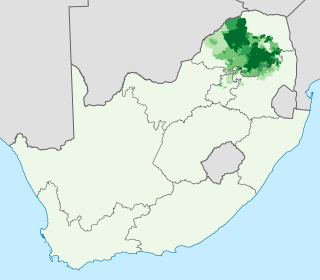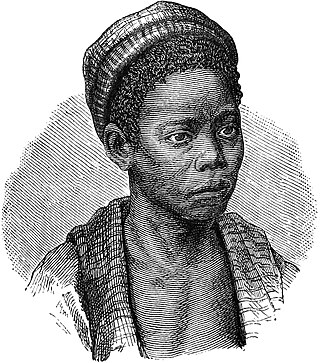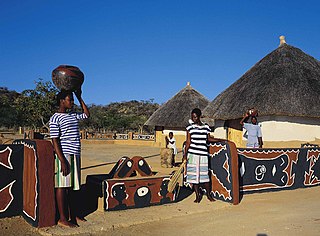
Sepedi, formerly called Sesotho sa Lebowa as an official language for the Lebowa homeland during apartheid, is a Sotho-Tswana language group spoken in the northeastern provinces of South Africa. It is commonly referred to in its standardized form as Pedi or Sepedi and holds the status of an official language in South Africa.

Tswana, also known by its native name Setswana, and previously spelled Sechuana in English, is a Bantu language spoken in and indigenous to Southern Africa by about 8.2 million people. It is closely related to the Northern Sotho and Southern Sotho languages, as well as the Kgalagadi language and the Lozi language.

The Tswana are a bantu ethnic group native to Southern Africa. Ethnic Tswana made up approximately 85% of the population of Botswana in 2011.
SothoSesotho, also known as Southern Sotho or Sesotho sa Borwa is a Southern Bantu language of the Sotho–Tswana ("S.30") group, spoken in Lesotho, and South Africa where it is an official language;
The Bakwena or Bakoena are a large Sotho-Tswana clan in Southern Africa of the southern Bantu group. They can be found in different parts of southern Africa such as Lesotho, Botswana, South Africa and Eswatini. "Kwena" is a Sotho/Tswana/Sepedi word meaning "crocodile", the crocodile is also their totem (seboko).
The term Batlôkwa refers to several Kgatla communities that reside in Lesotho and South Africa.

The Sotho, also known as the Basotho, are a prominent Sotho-Tswana ethnic group native to Southern Africa. They primarily inhabit the regions of Lesotho and South Africa.
The Lobedu or Balobedu(also known as the BaLozwi or Lozi or Bathobolo) are a southern African ethnic group that speak a Northern Sotho dialect. Their area is called Bolobedu. The name "balobedu" means "the mineral miners,"and they love owning mountains. They are the Sun LANGA people, praising Sun RAMASEDIAs God .Their ancestors were part of the great Mapungubwe early civilization. They have their own kingdom, the Balobedu Kingdom, within the Limpopo Province of South Africa with a female ruler, the Rain Queen Modjadji.

Lozi people, or Barotse, are a southern African ethnic group who speak Lozi and Silozi, a Sotho–Tswana language| Khelobedu. The Lozi people consist of more than 46 different ethnic groups and are primarily situated between Namibia, Angola. Botswana, Zimbabwe, South Africa including half of the north-Western and western provinces of Zambia inhabiting the region of Barotseland.
Barolong is a tribe of Tswana people from Botswana and South Africa. Their King, Tau was the descendant of King Morolong who is the founder of Barolong tribe. He reigned around 1240 and adopted Tholo as the Barolong totem. King Tau was a warrior king who reigned around 1660. He fought many battles and consolidated the Barolong tribe to become a very strong kingdom. He had many wives and begot many sons and daughters. The prominent four sons are Ratlou, Tshidi, Seleka and Rapulana. The Barolong tribe later used the names of the warrior King Tau's sons as their clan names. The Barolong tribe spread across the regions covering Botswana, through to Transvaal, Northern Cape and Free State. Its important to note that King Tau’s heir to the throne was Ratlou. After the death of King Tau in Taung, a village in the North West province of South Africa which was named after Kgosi Tau, Barolong left Taung under Nthua, the younger brother of Tau. They settled in Dithakwaneng, and later, Dithakong, where Nthua died and was buried. Ratlou and the tribe left Dithakong for Mamusa, and later settled in their former capital i.e. Setlagole. This is the place where the kingship of Barolong disintegrated into a number of clans, after Tau's sons. This is after the death of Ratlou. Ratlou had four sons i.e. Mariba, Seitshiro, Mokalake and Moirwagale. Two of these sons fought for the throne, with Mokalake supporting Mariba while Moirwagale supported Seitshiro. Moirwagale became the Regent for Seitshiro while Mokalake became one for Mariba. Finally Barolong disintegrated into four clans, and later five. Their final settlements are as follows; Ratlou; Mariba (Ganyesa); Seitshiro (Khunwana); Tshidi and Makgetla-Mahikeng; Seleka-Thaba nchu; Rapulana-Bodibe.

Thaba 'Nchu, also known as Blesberg, is a town in Free State, South Africa, 63 km east of Bloemfontein and 17 km east of Botshabelo. The population is largely made up of Tswana and Sotho people. The town was settled in December 1833 and officially established in 1873. The town grew larger following the 1913 Natives' Land Act that declared the area a homeland for the Tswana people.
Thekiso in the Sotho–Tswana languages, is the name of clan or family.

The Pedi or Bapedi, also known as the Sotho, Basotho, Northern Sotho, Basotho ba Lebowa, Transvaal Sotho, Marota, or Bamaroteng are a Sotho-Tswana ethnic group native to South Africa and Botswana that speak Pedi or Sepedi, which is one of the 12 official languages in South Africa. They are primarily situated in Limpopo, Gauteng and northern Mpumalanga.
The Southern Bantu languages are a large group of Bantu languages, largely validated in Janson (1991/92). They are nearly synonymous with Guthrie's Bantu zone S, apart from the exclusion of Shona and the inclusion of Makhuwa. They include all of the major Bantu languages of South Africa, Botswana, Lesotho, Eswatini, and Mozambique, with outliers such as Lozi in Zambia and Namibia, and Ngoni in Zambia, Tanzania and Malawi.

The population of Botswana is divided into the main ethnic groups of Tswana people (73%), Kalanga people (18%), and Basarwa (2%). The remaining 7% consist of other peoples, including some speaking the Kgalagadi language, and 1% of non-African people.
The Bobirwa Subdistrict is a jurisdiction in Botswana. It is populated by the Babirwa (Ba-Birwa) people who came from Transvaal in present-day South Africa.

Batlhaping is one of the Tswana tribes which resides mostly in the Northern Cape and North West of South Africa. The name of the Batlhaping loosely translates to; " those with an affinity for fish". After Barolong settled on the banks of the Vaal River known as Kolong, fish became a staple of their diet. During their migration, the Batlhaping encounted the Korana, a nomadic Khoisan tribe in 1750. The two tribes settled together. There were several harassing raids by the Ndebele which led to most Barolong to move Northwards to modern day Ganyesa. Those who were left behind stayed and fought back against the raids of the Ndebele and they were referred to from that point as "those who remained behind to eat fish", thus this became their name. This however did not mean that they were independent from Barolong. "Tlhapi" means "Fish", and this is not the tribe's totem. The tribe does have the symbol of the fish in usage under some circumstances to differentiate themselves from other Barolong, however since they are Barolong their totem or equivalent is a Kudu, which in Setswana is called Tholo. This is why Barolong affectionately refer to each other as "Tholo".
Manthatisi was the leader of the Tlokwa people during her son's minority from 1813 until 1824. She came to power as the regent for her son, Sekonyela, (Lents'a) following the death of her husband Kgosi Mokotjo. Mmanthatisi was known as a strong, brave and capable leader, both in times of peace and war. She was referred to by her followers as Mosanyane because of her slender body.
The Kholokoe are a subset of the Kgatla (Bakgatla) and descend from Morena Khetsi, son of Morena Tabane. The Kholokoe people are historically found in the eastern Free State, KwaZulu-Natal, Mpumalanga, and Heidelberg. They are the descendants of Bakgatla Chief Tabane and Mathulare, daughter of the Bafokeng Chief.
















